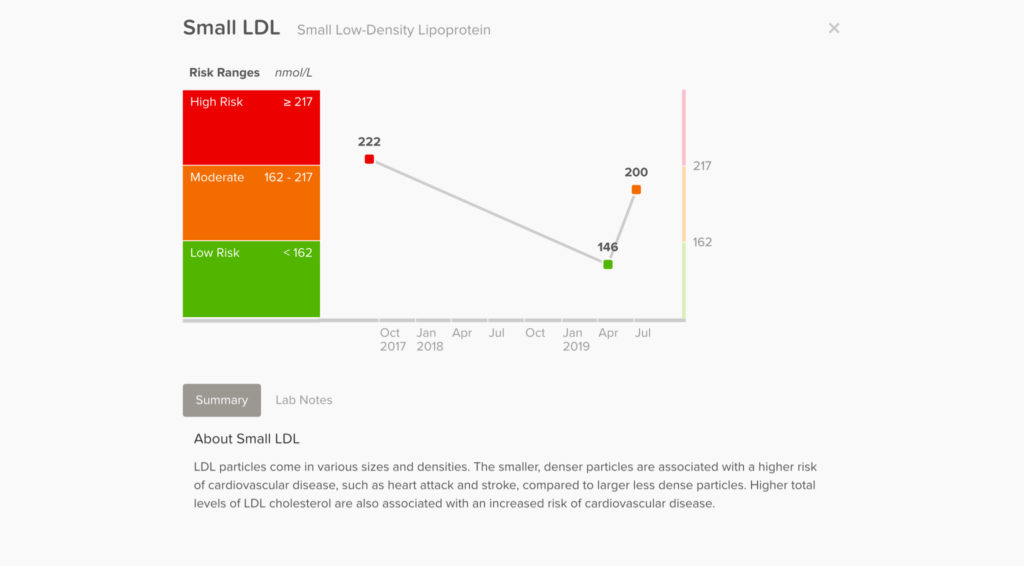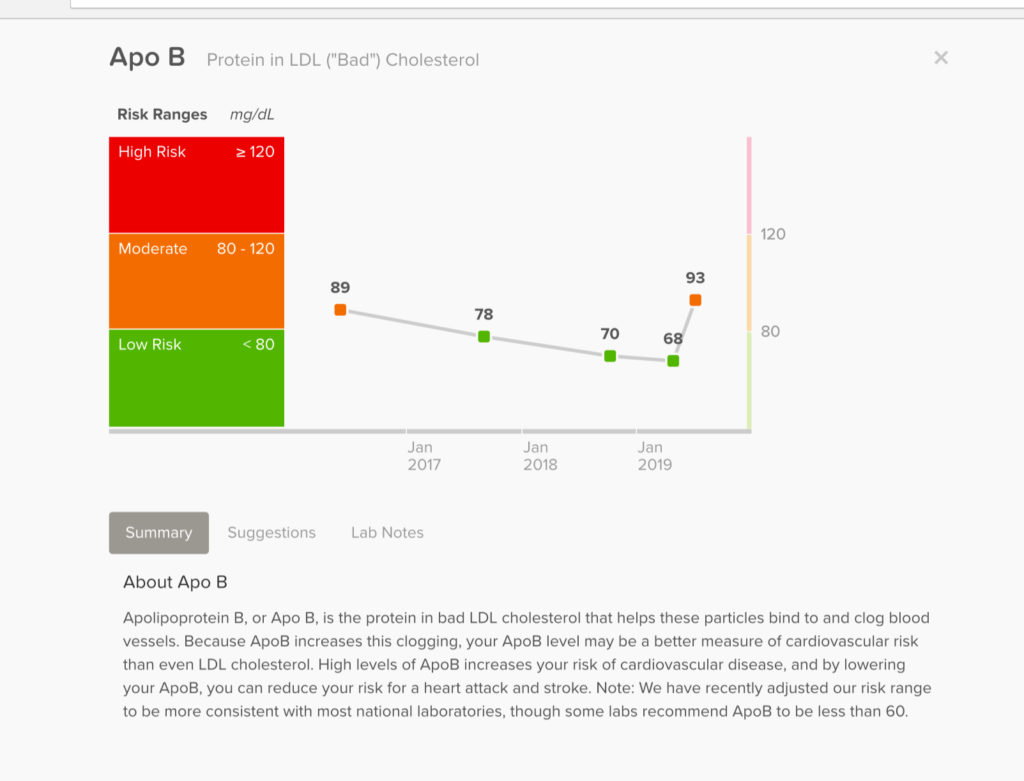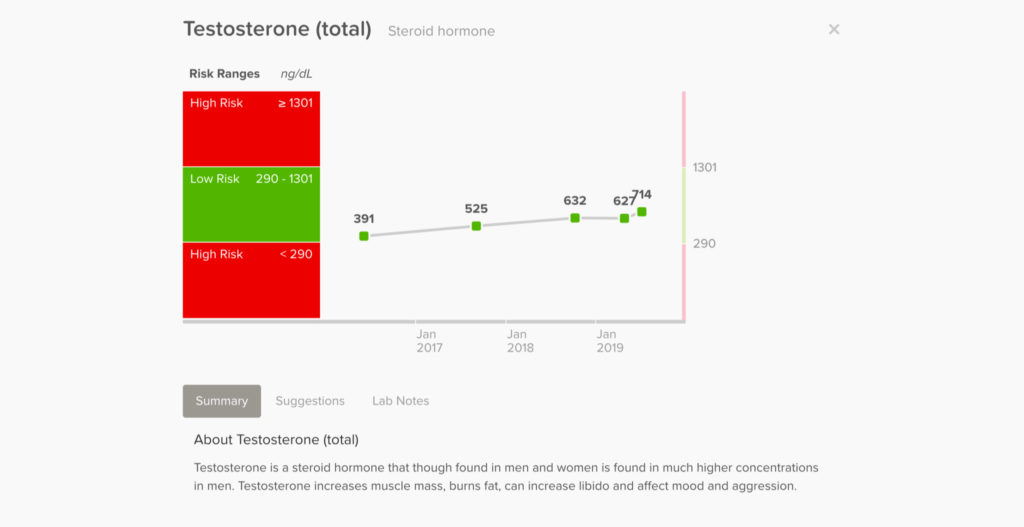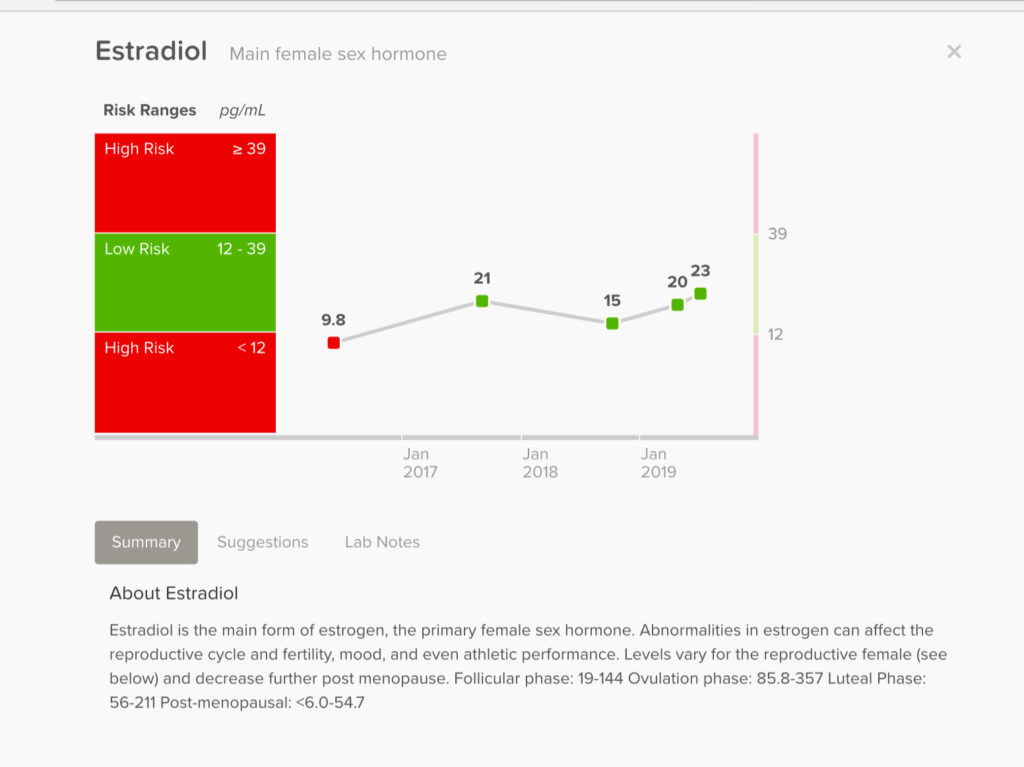Approximately 3 months ago, I embarked on a little experiment.
Having eaten almost exclusively plants for the previous three or four years— save for a Thanksgiving pumpkin pie here, and a Parisian croissant there— and having recorded the health impact of such a diet, I set out to reintroduce ‘just a little meat’ for a two month period, and test the impact on, not just my how-do-you-feels, but my blood.
Though I had some hypotheses about what might happen, I really had no idea to what extent things like cholesterol, testosterone, or markers of inflammation would be influenced.
The results turned out to be shocking.
I’ve organized this article as follows. Feel free to snoop around:
- Why Did I Do This To Myself
- Rules, Time Period, Measurement
- The Results
- My Takeaways
- FAQs
Here we go.
But, Justin, How Could You?
So why would a vegan do this? Isn’t it against my religion?
I did this for two reasons, one physiological (body), one psychological (mind):
(1) Physiological. The more hard sciencish reason was to see what would happen to my blood by just adding one serving (3.5 oz) of meat (fish, fowl, beef, pork), per day. The question was two-fold: (i) does just one serving of meat per day worsen my health, and (ii) if so, is it so substantial that the negatives outweigh the potential non-health benefits of meat? Things like taste and, you know, not being a social nuisance.
(2) Psychological. I feared I might be making that unfortunate turn from merely experimenting a plant diet, to the much more religiousy prospect of becoming a Vegan, capital ‘V.’ Several books suggested when trying to figure out an uncertain landscape (e.g. what is the healthiest diet) you are subject to biases based on what you currently are doing.
We want to confirm or justify our beliefs. Because of this, we are prone to miss facts that, although contrary to our actions, may nonetheless get us closer to the truth. One way to counter this is to actively seek out ‘disconfirming evidence’— evidence that goes against current actions and beliefs. That is what I tried to do here.
And so, I set out on my experiment, the results speak for themselves.
The Five Basic Ground Rules
Before I show you the results, explain them, and share my takeaways, allow me to remind you of the set-up of this experiment.
Rules
(1) Quantity. One serving of meat per day, on average. According to most guidelines, this is between 3-4 oz of meat, or the size of your fist.
(2) Highest Quality. As much as possible, wild-caught seafood, organic, free-range chicken, and grass-fed beef. Also, healthier cooking styles, for example, grilled or roasted, not fried.
(3) Distribution. I ate several different meats but wanted to make it, anecdotally, the ‘healthiest distribution.’ That is, mostly fish, followed by white meat poultry, followed by beef and, finally—Hashem, help me— pork.
(4) Only Meat. I just ate meat rather than, say, eating all animal products (dairy, eggs) to try and isolate one variable. Cheese, milk and eggs have their own schticks. These results are dairy-free.
(5) All Else Constant. The rest of my diet I was to keep the same— the same as what delivered the baseline blood report. This diet is mostly Green-light, plus some Yellow, and a cheat meal a couple times per month.
My Compliance
So, did I stick to the rules? Yes, mostly.
In terms of the servings per day, they varied day to day, some days more, some days less, or none. I made sure to balance them out so that the average serving per day ended up somewhere close to the 3-4 oz goal. Remarkably, this ‘feel it out’ approach actually worked— I ended up at 3.54 oz per day.
Here’s how I tracked them in an Evernote file. Notice the days labeled “PLANTS.” I made up for those later with ‘double-meat’ days of 6-8 oz. Yes, those days hurt my belly.

For quality, I was able to eat about 65% wild-caught / grass-fed/organic, which is probably just about as good as anyone does who isn’t more health-insane than me. And I’d say 90% was grilled or roasted (or raw). The one fried meal came at Momofuku in Vegas courtesy of their famous fried chicken (for which I should be forgiven), and stir fried a few other times.
Distribution. I was pretty good here as well, eating about 5% more beef than I wanted, a little less fish than I wanted, but still very close. The distribution ended up being the following: ~43% fish (and other seafood), 36% poultry, 15% beef and 6% pork. Here’s a pie chart. That’s fun.

In terms of the last two rules, I only ate meat, with the exception of one-half of an egg white omelet and a few bites of things with dairy / egg in them, maybe once or twice per month. Since I do this anyway on the reg, this shouldn’t obscure the results.
Ok, lets get to the good stuff. Here are the results, side by side.
Results
Summary: key markers
- Total Cholesterol: UP 30%
- LDL (bad) Cholesterol: UP ~50% (Small LDL up 30%)
- APO(b) UP
- HDL (good) Cholesterol: UP
- Inflammation UP in 2 out of 3 Measurements
- Testosterone and Estrogen Stable
- Omega 3 UP

Cholesterol
Total Cholesterol: Up 30% From 163 to 213

The most shocking piece of this was a 30% increase eating just 3.5 oz of meat per day. That’s LESS than a quarter-pounder from McD’s. The USDA daily recommended meat intake is between 5 and 6 oz. In 2018, Americans ate about 10 oz per day!
So, eating just 1/3 of what most people consume, and almost half of the ‘recommended’ amount, my cholesterol went up 30%.
LDL “Bad” Cholesterol: Up 50%

LDL, the ‘bad’ cholesterol, is not actually cholesterol at all. Rather, like its counterpart, HDL, it transports cholesterol. LDL is ‘bad’ because it transports Cholesterol into the blood and into the cells. This allows for the potential to get stuck in arteries, ‘oxidize’ and cause ruptures.
This is especially so for the small, dense particles…
Small LDL up over 30%

Small LDL is worst because it tends to be denser, sinking to the bottom of the blood stream, potential sticking to the artery wall. Larger particles are less likely to do this. This number being up so high is of particular concern.
Ok, one more LDL-like thing, APO(b)
Apo(B) Up 40%

The American Heart Association reports that “higher concentrations of the apolipoprotein B (apoB) lipoproteins increase the risk of cardiovascular disease.” Here, it went up a scary 40%.
HDL up ~15% (good news or bad?)

HDL is said to be ‘good’ because it transports cholesterol out of the cells and blood and into the liver where it is disposed of. My plant HDL was good, but this appears better. Or is it?
According to WEllnessFX (the company I use to measure blood), higher HDL is better. However, a recent study out of Emory suggests the optimal range might actually be between 40-60. So, it’s hard to conclude good or bad with certainty.
Inflammation
This WellnessFX test took three different measures of inflammation that all serve different functions. All are indicators for either heart disease or cancer risk. In this case, two of the three factors got worse, and there is a question surrounding the one that improved, ‘CRP.’
C-Reactive Protein (CRP) Decreased

Many consider inflammation to be the unifying theory of disease and CRP is one of the key measures of total inflammation in the body. Here it went down since my last test, which is great.
The confusion is that for 18 months, my ‘plant-based CRP’ had been almost beneath detection— at less than 0.2— which is the lowest level at which WFX tracks it. My latest tests went up to 0.5 for a reason unknown. So here, I can’t tell if that was an aberration, or this was an improvement.
Homocysteine up 25%

Homocysteine levels in the blood have been correlatedh with faster cognitive decline— more is worse. Here, my levels jumped up to 10.5 after being below 8.8 units for over 2.5 years.
Fibrinogen up a little

The final inflammatory factor here. Not up very much, but had been trending down, and you can see where it was in 2016 when I was eating Paleo-like.
Sex Hormones
One of the anecdotal claims for meat is that it normalizes your reproductive hormones. Men are worried about giving up meat for e.g. soy for fear of man-boobies (increased estrogen) and a decrease in testosterone. However, that has not been my experience as you saw from the results of My Vegan Experiment. But what happened here?
Total Testosterone UP 15%

While my total testosterone had been well within a normal range before, it went up here about 15%. Which is, on its face, a good thing. You know, if you wanna be a real man.
The problem is that the testosterone that matters is the “free testosterone.”
Free (‘biologically useable’) Testosterone DOWN a little

Free testosterone is the only testosterone in the body that is biologically useful and active. The rest of the ‘total testosterone’ is bound up and unusable.
As you can see here, my useable testosterone actually went down with meat consumption. My highest amount was in October of 2018 when I was fully plant-based and eating soy everyday.
Estrogen UP 15%

You can see here, it went up about 15%. Not a real concern as I am well within the healthy range, but worth noting that it didn’t go down, as many might assume it would.
Essential Fatty Acids (Omega 3 + 6)
Much like ‘essential nutrients,’ essential fatty acids are ‘essential,’ because our bodies do not produce them, so we need to get them from food. Omega 3 and 6 are crucial.
However, the balance of 3 v. 6 is also crucial. In the last 100 years, we’ve started eating lot more 6 and not enough 3, and many point to this as one of the factors contributing to disease.
Omega 3 (DHA, EPA, ALA) up

This ‘omega index’ shows the amount of Omega 3 as a total percentage of fatty acids in my body. Here, you can see it went up 50%. This is, by all measures a very good thing, and it is something I would have to solve for if I decided to go back to just plants.
Omega 6 up 25%

My Omega 6 also went up, which is not good. Overall, however, my ratio improved. So it is most likely a net win.
Quick Discussion and Conclusion
Good Stuff
>OMEGA 3s
On the plus side, my Omega 6:3 ratio improved. Omega 3s, specifically the marine-based Omega 3s like DHA and EPA, seem crucial in, at least, cognitive performance. (Though there is some doubt here, and here.).
If I was to go back to eating all plants, I would have to account for keeping this high, most likely with supplementation. I’m currently testing out a supplement for this and will report back.
>HDL
As I pointed out, many sources suggest that increased HDL is good. However, recent studies have given some pause to that conclusion. So let’s say I am cautiously optimistic about quality meat’s ability to increase HDL.
Bad Stuff
>LDL and ApoB
The bad news is that, overall, my lipids went way downhill. Specifically concerning are the small LDL and ApoB increases. Those are both key in the prediction of heart disease.
>Inflammation
CRP will be something I have to watch as, given my history, I am not convinced there was a net benefit here. But with Fibrinogen and Homocysteine on the rise, you have to be a little concerned.
Neutralish
>Sex Hormones
These didn’t change much, but were trending worse, and taken with my original meat-to-plants Vegan Experiment, I’d have to keep an eye on them.
Conclusion
I was surprised by how much my cholesterol changed by adding just 3.5 oz per day of mostly very quality meat. This is NOT a lot of meat. As I mentioned, the USDA recommends 5 – 6 oz per day, and the US averages about 10 oz per person/day. I also was eating nearly 50% fish. Overall, my whole ‘Lipid profile’ is concerning.
I would have been more surprised about the sex hormone results had I not seen the converse effects already in my Vegan Experiment. So the fact that Free Testosterone fell and Estrogen increased after adding back meat, was not shocking.
I was also not shocked that Omega 3 went up as I ate quality fish. That is something I will have to account for in the future.
Bottom line: In terms of disease and cancer risk, adding back meat, even once a day, seems like a pretty big risk. At least it does for me.
FAQs
So, wait, is meat bad?
I’m not saying that meat is bad. I am saying that when I’ve eaten meat, and done it in the healthiest way I know how, my ‘biomarkers’ for disease get to a concerning point. I view it as too risky to consistently eat meat, at least in this amount. If you eat fish a couple times per week, I think your results will be different.
Also, perhaps there are those that eat meat regularly, and yet their inflammation, LDL, ApoB and other markers are still what is considered optimal. More power to them (keeping the ethical / planet-saving convo separate).
Or, maybe those people have the same numbers as me when they eat meat, but perhaps they disagree that it poses a large risk. To them I would say, why not? Show me the science.
Or maybe they just haven’t bothered to check.
Do you think 71 days is enough to avoid a ‘shock to the body’ situation? Was there a flaw in the design?
This is definitely possible. I obviously don’t know.
However, I contemplated this in Part 1. The reason I made it in excess of two months, versus how long I would have wanted to make it like 2-4 weeks, was exactly for this reason. In other areas, it takes the body about 2-4 weeks to normalize. For instance, in my one year Vegan Experiment, the first blood test was at around 3 weeks. At that point, most of my blood had already gotten to the point at which it would remain one year later. Another example is fasting. When you fast at the TrueNorth Health Center as I did last week, they say wait 4-6 weeks before testing your blood, to make sure it has normalized with the fasting impact.
I can’t find a scenario where more than 2 months is needed to indicate what might happen with a dietary change. If you know of one, or a reason this experiment specifically was not long enough, please tell me.
Do your genetics predispose you to this risk?
I have a 23-and-Me report which I have run through two platforms that further analyze risk like this: Promethease and Dr. Rhonda Patrick’s genetics tool. Neither suggest I have a genetic disposition to such a reaction to saturated fat and / or meat in general.
Don’t you think everyone is different?
I think people certainly have differences, but that we can still make a lot of substantiated claims about what is generally risky and what is generally healthy.
Kale is generally healthy. Table sugar is generally not. For me, according to the science and to my blood, meat is relatively risky when compared to its benefits.
What should I do If I eat meat and want to find out if I am at risk (even if I am in good shape)?
Get tested. The two most important categories to test for seem to be inflammation and lipids (like cholesterol). Specific to inflammation, I would find out my CRP and homocysteine levels. For lipids, you need a detailed lipid panel that will show at least the following: Small LDL, ApoB, and Lp(a). I have found this a struggle to get through my doctor as they have insurance issues to worry about. WellnessFX is how I got it measured. The full test is $1000 and the minimum test you would need is about $500. I think it is worth it.
What will you do now?
I am going to go back eating 99% plants. I say 99%, because I’ll eat a bowl of parm-ridden pasta once a month, and maybe a coupla pumpkin pie slices over Thanksgiving. Also, as you saw in my Scenes from Paris, I’ve been known to scarf down a few croissants per day while abroad. But, other than that, plants.
Is there a next experiment?
I am in the midst of one to see if a 4.5 day water-only fast has lasting impact on inflammation or other lipids. I should have those results around Labor Day.
After that, I was thinking maybe testing dairy or eggs.
What do you think I should test next?
Leave a comment or send me a note at Steinfelder@thedilettante.org



7 Comments on “My Meat Experiment Results: Before and After Blood Report From a Plant-Eater Turned Carnivore”
This was fascinating and instructive. Thank you.
Thanks, Professor P. Glad to hear.
Dairy please… cow dairy then sheep or goat. K thanks
Noted. Thanks…dog…
Salted caramel. How many oz per day should we be eating?
I’d limit it to about 100-150 oz per day, just as long as it isn’t meat caramel.
(for everyone else, this is a joke).
Mixing meat with carbs and sugars or anything with natural sugar in it like almost all fruits will raise your LDL. This is pretty much what I call the average American meal plan. Lots of breads and sugars in many different forms. However, it’s interesting that consuming any type of meat without the sugars and carbs usually will cause an increase in HDL with a slight reduction in LDL when compared to what an average American meal plan is. Blood pressure usually decreases by about 10-15% and will significantly lower A1C and other markers for pre-diabetes. Takes roughly 3-4 months for improvements in bloodwork to round off the bell curve. However, blood pressure improvements in the 10-15% range are usually recorded within 5 weeks